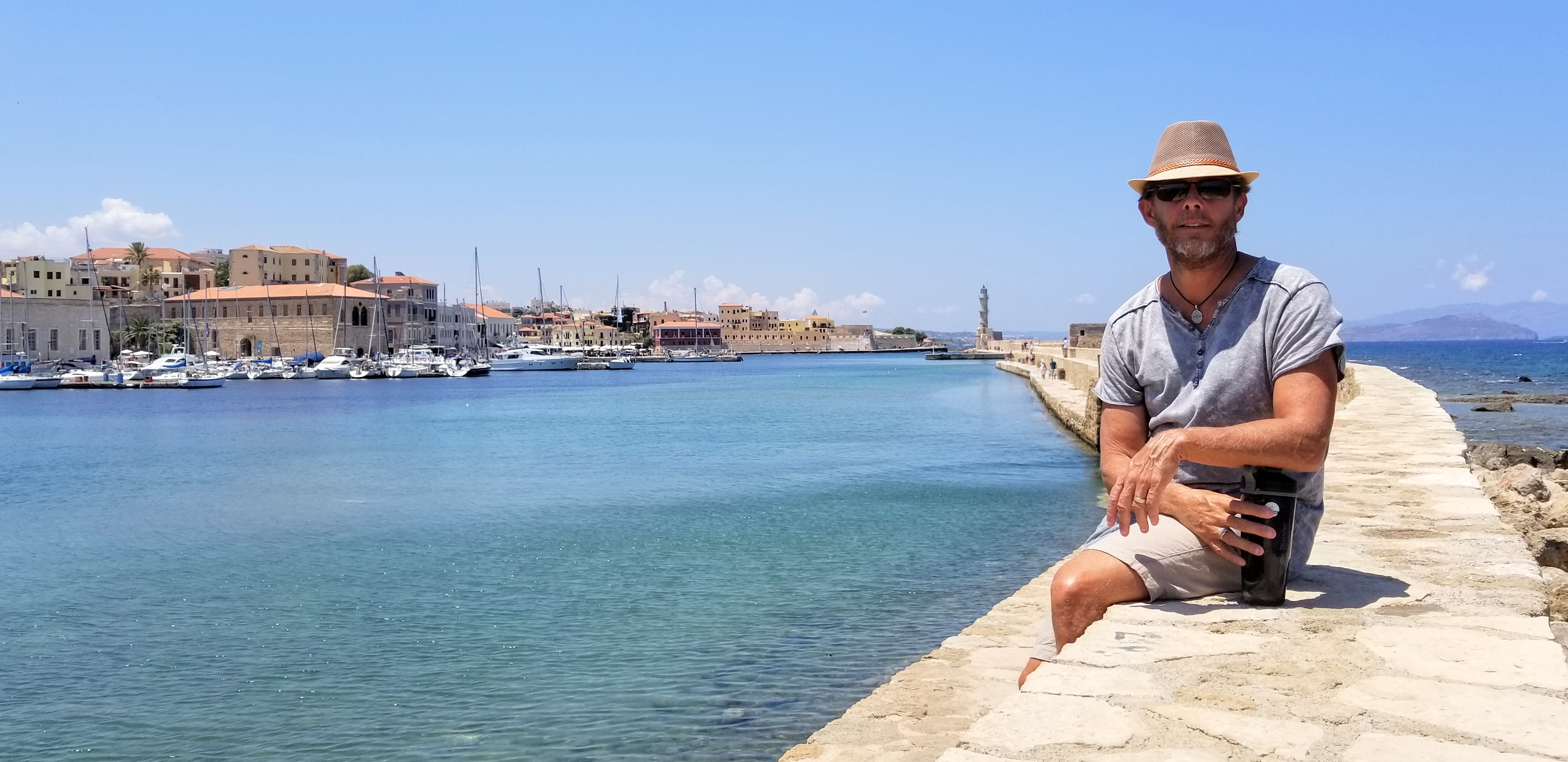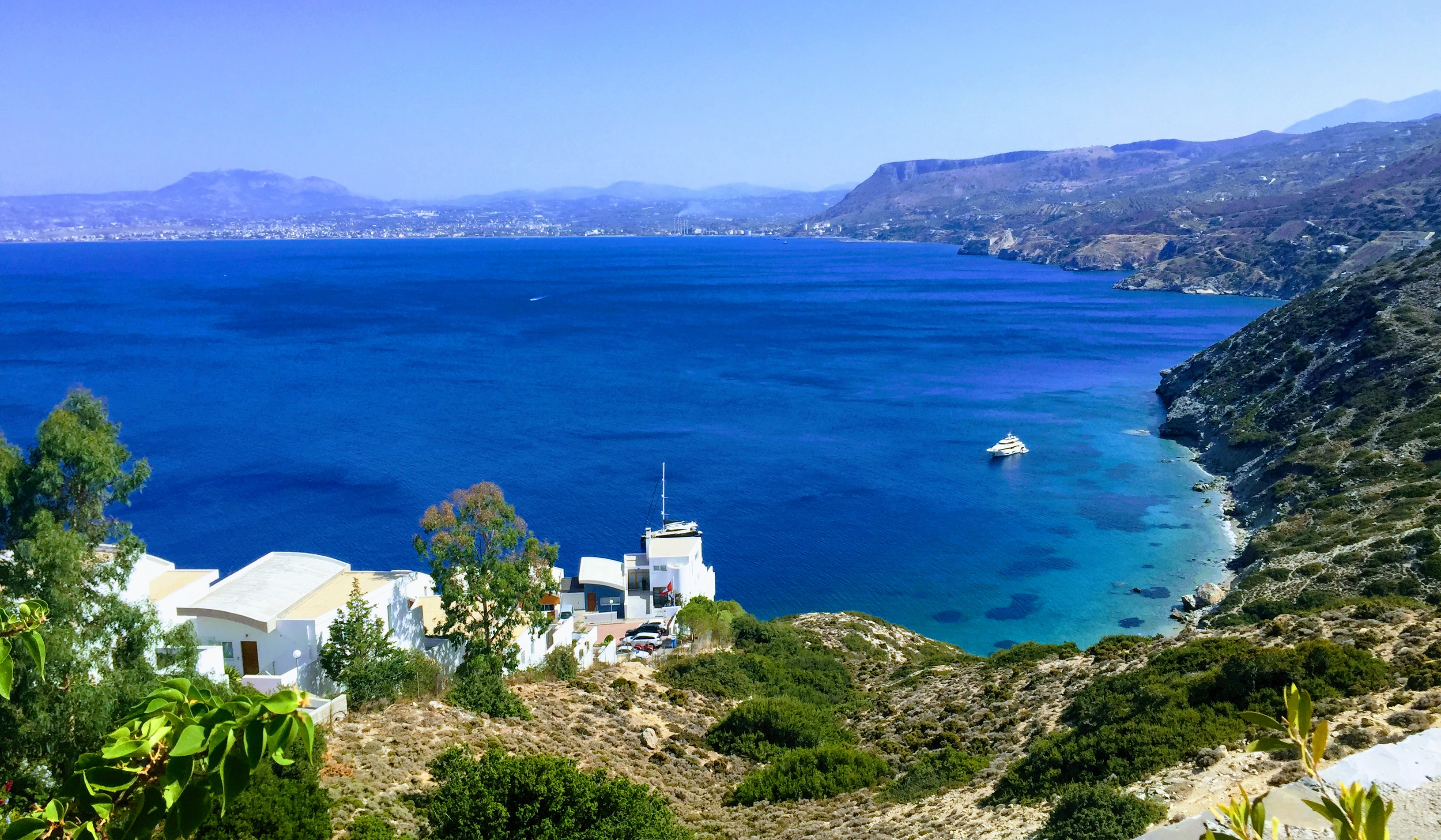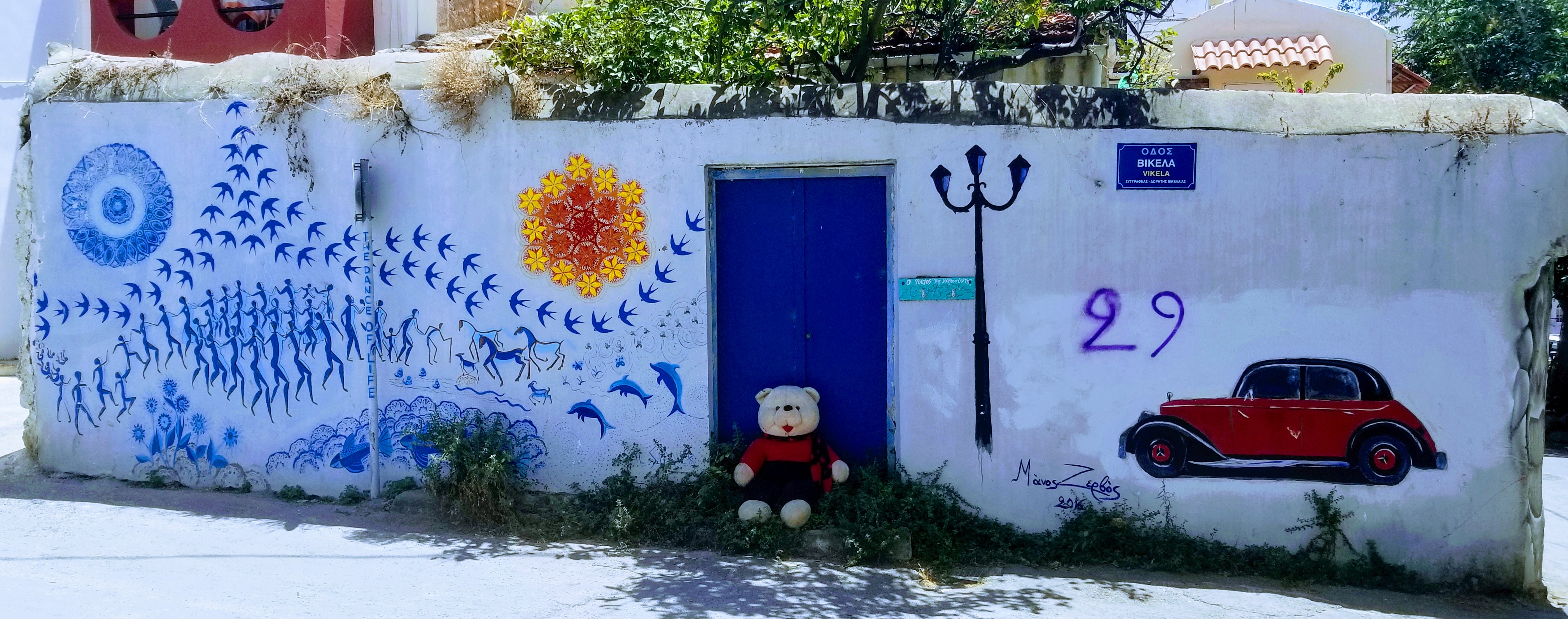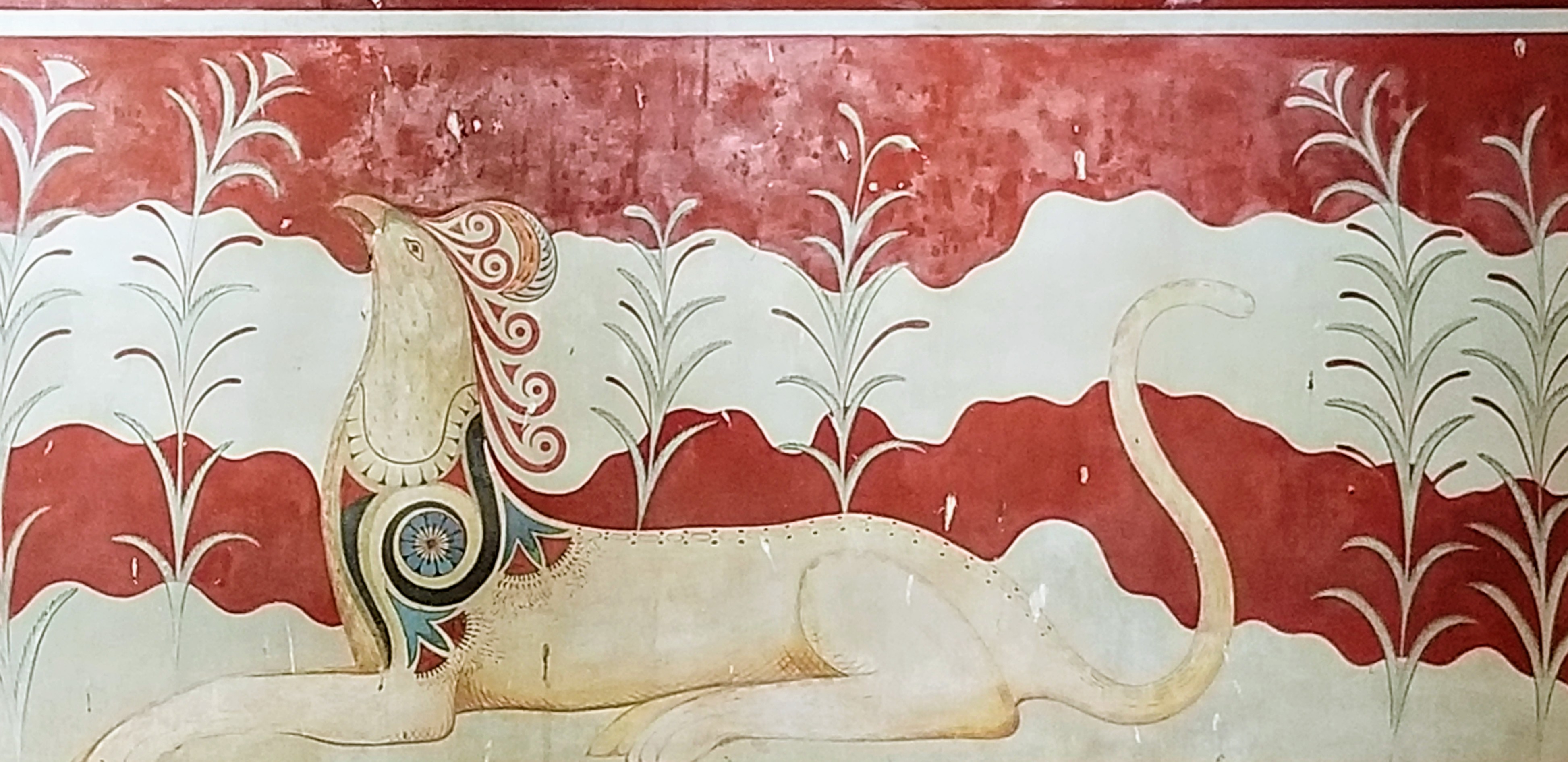
Our last 10 days in Greece were spent on the northern part of it’s largest island – Crete. With thousands of years of culture and history, there are many pockets to experience and enjoy. We will share those pockets that were our favorites but also cover the areas of Crete that we will not return to.
Obviously there is a big contrast between such a large island as Crete and the smaller less developed ones that we enjoyed earlier like Paros, Antiparos, Milos and Naxos. My heart is with the less developed and less touristy islands as they are cleaner and much quieter.

Chania (pronounced Hanya) is a city on the northwest coast of Crete and is surrounded by beautiful beaches. It’s known for its 14th-century Venetian harbor, narrow cobblestone streets and numerous waterfront restaurants. At the harbor entrance is a 16th-century lighthouse with Venetian, Egyptian and Ottoman influences. Across from the lighthouse the Nautical Museum has model ships, naval objects and photographs. The former monastery of St. Francis houses the Archaeological Museum. To me, Chania is the crown jewel of Crete and is a must visit.

One of our favorite hotels during this whole multi-month trip was just outside of Chania – Kavos Hotel. Located between stunning beaches, this boutique hotel had great accommodations and food, a lovely pool and beach access for snorkeling – and yes, their wifi actually worked well!

Heraklion is the fifth largest city in Greece and is the capital of this island (as well as the birthplace of El Greco). The city is noisy and grimy but it does have some love pockets to visit.
The Koules Venetian Fortress on the harbor was built in the early 1500’s. It is well known for the beautiful views from it’s turret and roof and for it’s impressive stone mass and unfathomably solid walls.
The enormous Archaeological Museum (converted from an old power station) on one corner of the central Eleftherias Square, collects together many of the finds from Knossos, Archanes, Phaestos, Zakros and many other archeological sites on Crete.
In addition, just outside of Heraklion are 2 wine regions. The first is called Peza and the second is Archanes.
Peza is the most productive appelation, creating about 70% of the islands wines. Both red and white wines are made. The best of the grapes are grown at elevation.
The best winery on the island is considered to be Titakis and they do offer wine tastings.

Knossos is the largest Bronze Age archaeological site on this island and has been called Europe’s oldest city as it was settled as early as the Neolithic period.
Furthermore, there aren’t many places in the world like Knossos. Situated just 6 km south of the sea, on the north central coast of Crete, several things make this archaeological site important: its great antiquity (it is 9,000 years old), many different cultural layers (Neolithic through Byzantine, its size (nearly 10 square Km) and its great popularity (the second most visited archaeological site in Greece after the Acropolis at Athens).
Therefore, Knossos is an absolute must see place on Crete!
Pro Tip: Bring sunscreen, water and some walking shoes as there is much to explore.

Wrap Up – Crete
Crete does offer some fantastic sights! Chania was certainly our favorite town on the island. And specifically because there is so much to see and do there. Subsequently we regret not spending more time in Chania and less in Heraklion.
Although the northern part of Crete was not our favorite part of Greece, we do want to come back and explore the south beaches and cities in the future. Maybe we will find a real treasure, like we found in Comino, Malta.
Knossos was another highlight and is a must on this island!
Have you been to Crete or any of the other Greek islands? We would love to hear what you enjoyed the most.
